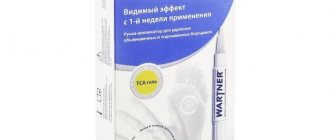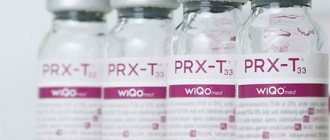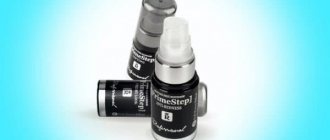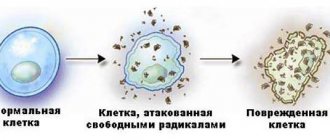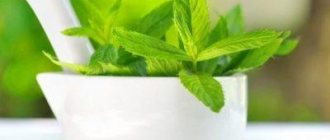The dosage of lactic acid in the instructions is quite difficult to describe. It's simpler like this:
If you need a dose of 1 ml of 40% lactic acid, then this means that 1 ml of 40% acid needs to be diluted in 20 ml of water and you get 20 ml of 2% lactic acid.
Accordingly, if the dose is 5 ml, add water to 100 ml, if the dose is 10 ml, then to 200 ml
For example, a cow was prescribed 20 ml. This means that you need to take 20 ml of concentrated solution from the bottle and add 400 ml of ordinary water to it. By the way, you can use more water. The point of diluting with water is that concentrated acid cannot be used due to burns to the mucous membranes.
Most often, lactic acid is used for atony (stomach swelling) and tympania (rumen swelling) in cattle as a ruminator. It is advisable to have it in every first aid kit of a cow owner.
This drug is convenient because it can also be used in deep-pregnant cows. When treating chronic tympany or rumen atony in cattle or goats, the medicine can be used for quite a long time. Sometimes it is easier to add the recommended dose of lactic acid to the cow's drinking water rather than pouring it in each time. The positive effect of the use of lactic acid is not only that it is a mild ruminator, but also that it promotes better digestion of feed, i.e., it can be used by weakened animals to improve digestion and appetite during the recovery period, although it is possible in this case, it is better to take a special acidifier, for example aquaclian-kaphos.
Prevention of gastrointestinal infections, such as coccidiosis in rabbits, can be done more simply. You can simply add 1 ml of 40% acid per 1 liter of water to drinking water. This method of application is very simple and convenient. True, rabbits drink much less water if they have succulent food, so this should be taken into account when using lactic acid for treatment. Lactic acid is also used in beekeeping to combat the Varroa mite, although according to reviews the effectiveness is not very high and this method is best used in combination with others.
Applications and Dosage
Lactic acid 40% is used internally for the prevention and treatment of intestinal inflammation, gastritis with reduced secretory function, tympany in ruminants, as well as for flatulence and acute dilatation of the stomach as a means of promoting relaxation of the sphincters, in the following doses per animal: horses - 5 -35 ml, cattle – 8-40 ml, sheep – 1.5-7.5 ml, pigs – 0.5-7.5 ml, dogs – 0.2-2.5 ml, foxes and arctic foxes – 0.7-2.5 ml is set in an aqueous solution of no more than 2% concentration. For trichomoniasis in cattle, the vagina is irrigated with a 1% aqueous solution. For ulcerative lesions of the skin and mucous membranes, it is used as a cauterizing agent in the form of 10-40% solutions. To stimulate animal digestion and increase egg production of laying hens, use a dose of 0.5 ml of 40% concentration per 1 kg of feed (500 ml per 1 ton of feed) for 3 months in a row. To disinfect the air in incubators, poultry houses, calf houses and other livestock buildings in the presence of poultry and animals, it is used in the form of an aerosol (20% acid is sprayed) at a dose of 15-20 ml/m3.
What is lactic acid used for? Product "Lactic acid": properties and application
The product “Lactic acid” is used both in medicine and in other areas of human activity. In its natural form, the substance is a syrupy, colorless or slightly yellowish liquid with a specific odor and sour taste. The drug belongs to the category of alpha hydroxy acids and is non-toxic.
Properties of the drug
The drug is obtained through the fermentation of lactose- and sugar-containing raw materials with lactic acid bacteria. The substance dissolves easily in glycerin, alcohol and water. In medicine, the element is included in a special product because it has moisturizing properties. The exfoliating effect of the drug is known. “Lactic acid,” the properties of which determine its demand, like other alpha hydroxy acids, breaks down the protein bonds between dead skin cells. This promotes the detachment of cells and allows them to be washed away from the surface of the skin. In addition, the product has antimicrobial and anti-inflammatory properties; it creates an acidic environment that is destructive for various microbes, fungi and parasites. It is also known about the moisturizing, whitening and brightening effects of the drug. This causes the presence of acid in the compositions of many cosmetics and shampoos. The substance is used to treat acne; the acid reduces stretch marks on the skin, smoothes out small wrinkles, reducing their depth, strengthens and refreshes dehydrated and sagging skin, improves its color and elasticity. The element also effectively eliminates sweat odor.
Product "Lactic acid": application
The substance is used to make soap, for which it is added to an alkaline solution and sodium lactate is obtained or added to the finished soap composition as an acidity regulator and active component. Using the element, rejuvenating, regenerating, cleansing lotions, serums and creams are made, in which lactic acid allows the active ingredients to penetrate deeper into the skin. The product is used for peeling, as it improves the exfoliation of keratin surface scales, has powerful moisture-retaining and moisturizing properties, promotes skin renewal, makes it velvety and soft, and activates the immune system. As part of depigmenting agents, “Lactic acid” is used to remove various pigmentations, lentigines, freckles, chloasma, and age spots.
The substance is an acidity regulator in shampoos, promotes renewal, hydration and regeneration of skin cells. The product is used for douching for leucorrhoea; in concentrated form, the drug “Lactic acid” is prescribed to remove calluses and cauterize warts. A solution of the product (1%) is used to rinse the mouth to remove the substance. In intimate cosmetics, the substance is used as an acidity regulator.
Precautionary measures
When used in its pure form, “Lactic acid” causes necrolysis of the mucous membranes; it should not be used for skin lesions. When used in cosmetics, the substance may dry out the skin. When used correctly and in accordance with the dosage, the acid does not cause side effects.
What effect can be achieved using the procedure?
Superficial peeling with lactic acid allows a woman to make her skin more hydrated, small pigment spots disappear from the surface, and the skin texture itself becomes more even.
The product helps eliminate spots on the face that remain after the formation of acne, after several procedures small wrinkles disappear, and the cleansing process also helps eliminate redness and inflammatory processes on the skin. If you apply the product correctly, the skin will not become oily so quickly, and the oily sheen will also be eliminated.
Still, it is worth remembering that milk peeling at home, although it helps improve the condition of the skin, still cannot eliminate deep scars and acne scars, and the product will not smooth out too noticeable wrinkles.
What it is
Lactate is a product produced during the breakdown of glucose molecules. The process of decay itself occurs for the purpose of releasing energy. This process occurs during anaerobic exercise.
Lactic acid is formed in the muscles only during exercise and is completely eliminated from the body within an hour. It is generally accepted that soreness, which appears about a day after the training process, is a consequence of the presence of lactic acid in the muscles, but this is not so. Muscle pain occurs from many micro-tears formed due to intense overload on the tissue. There is research about this.
Despite the benefits for the body, the breakdown product of glucose can also lead to adverse consequences. A regular (systematic) increase in lactate in the blood can lead to a pathological condition, so-called lactic acidosis. This condition leads to disruption of the functioning of all systems and organs. But pathology does not appear from physical activity.
Why is lactic acid used?
Lactic acid has a number of medicinal effects that help increase animal productivity and improve their health. The specific positive effects of the drug depend on the method of its use. So, in the case of oral intake of liquid as part of the feed and with water, it has the following effects:
- destruction of pathogenic bacteria located in the digestive tract;
- improvement of metabolism;
- limiting the proliferation of pathogenic microflora;
- relaxation of the muscles of the digestive system, as a result of which food passes through the gastrointestinal tract more easily;
- reducing the consequences of poisoning the body of rabbits with toxic substances.
Due to the extensive list of positive effects on the body, veterinarians recommend giving lactic acid to rabbits for bloating, gastritis, enteritis, and acute dilatation of the animal’s stomach. The use of the product also affects the increase in sexual activity of animals, so it is often used for prophylactic purposes.
The drug is also effective when used externally. It is used for:
- treating fungi that develop on the skin of rabbits;
- treatment of superficial inflammatory processes;
- lubricating ulcers and abscesses;
- disinfection of mechanical damage and wounds.
The effective antibacterial effect of the liquid has become the reason for its widespread use for the purpose of disinfecting premises, equipment, and utensils used in keeping rabbits. Even in diluted form, this composition quickly copes with the infection.
Why do rabbits need lactic acid?
Now let's figure out what importance lactic acid has for rabbits and how to give it to these animals. The substance can be used as an additive to food or water - internally and externally.
Lactic (hydroxypropionic) acid is an organic substance that, if used correctly, does not have any negative consequences or side effects.
The main reason why lactic acid is used for rabbits on farms and in private households is its effect on digestion and the condition of the gastrointestinal tract (GIT).
When eating roughage, animals may suffer from bloating. These problems can be avoided by giving rabbits lactic acid. It is usually added to food or drink.
The use of lactate by rabbits has a beneficial effect on their general condition: food is digested faster and more fully. The digestion of rough parts of food is stimulated, and the vital energy of the animals increases.
In addition, adding lactic acid to food corrects reproductive capabilities, increasing sexual activity in males and females.
How to rid yourself of lactic acid? Practical recommendations
A large number of beginners in the gym almost constantly experience discomfort from training, which leads to a burning sensation in the muscles. But if you remember simple tips (which come next), the level of comfort of the exercise will increase, and discomfort will be minimized. So, in order for the accumulation of lactic acid to occur in small quantities, you need to:
- Start your workout with a warm-up. It should be light and warming;
- Stretch the muscles after each repetition of the exercise/after completing a set;
- Increase the weight of the load gradually as the muscles are ready for it;
- Don’t skip workouts so that your muscles get used to the load;
- Recover fully after every workout.
That's all. If you follow simple tips and take into account the information provided, you can easily learn how to manage the most powerful catalyst for training intensity.
Why does lactic acid form in muscles?
Lactic acid is a source of energy. During intense training, almost a third of all acid produced is formed in the “fast” muscle fibers, and subsequently penetrates into the “slow” ones and becomes the source of their energy. This breakdown product allows the athlete to train at higher intensity for longer periods of time.
- Lactate dilates blood vessels and provides blood flow to muscle fibers, in turn enriching the target muscles with oxygen and nutrients. This effect promotes hypertrophy.
- Also, the formation of lactate contributes to an increase in testosterone during exercise. Moreover, the larger the muscles involved, the more acid is released and, accordingly, testosterone.
How to remove lactic acid from muscles
Measures that promote minimal lactate formation should be carried out at the beginning of the training process. In addition to warming up and cooling down, you should adhere to a gradual increase in load (working weight). You should also take a pause between approaches, sufficient for recovery and removal of lactate.
Accelerating the elimination of lactic acid during rest
Active rest after training will help remove lactate from the body, and passive rest, on the contrary, will slow down its removal. It is better to organize a walk than to lie on the sofa staring at the TV. Also, a warm bath will significantly speed up the process by increasing blood circulation in the muscles.
Rapid removal of lactic acid from muscles directly during training
Lactic acid is eliminated faster during strength training, which is based on short-term loads with heavy weights.
Even with a minimum rest time between sets of 10-20 seconds with this type of load, most of the lactic acid formed is removed from the muscles, and pain disappears. The body is also able to adapt well to the process of formation and elimination of lactate during regular training, and subsequently remove it in the shortest possible time. Warm-up and cool-down can speed up its elimination. By the way, experienced athletes have significantly lower concentrations of lactic acid than beginners.
Preparations for removing lactic acid from muscles: sports nutrition and pharmacological agents
- Isotonics are used during the training process. These sports products contain bicarbonates, which neutralize lactate.
- Another sports supplement is the amino acid beta-alanine.
- Carnosine, citrulline, glutamine, L-carnitine creatine are also effective.
There is no need to focus too much on sports nutrition. It is enough to purchase an amino acid complex or supplement that contains creatine to ensure a sufficient rate of lactic acid elimination.
Medicines that promote the removal of lactic acid include adrenaline and sodium nitroprusside.
The most effective ways to remove lactate are active rest and regular exercise, due to which the body will adapt to the utilization of the substance.
